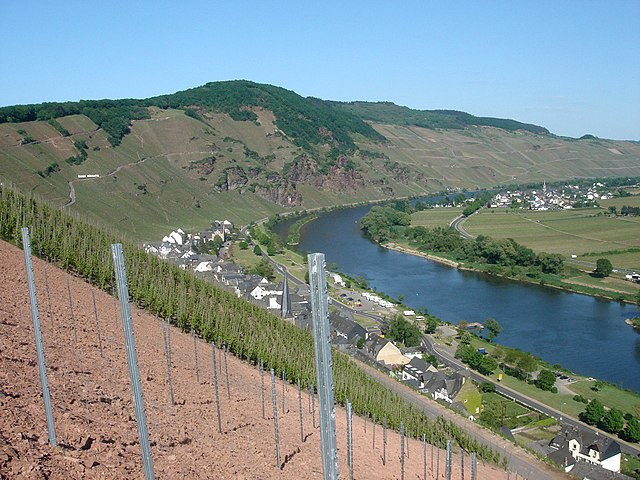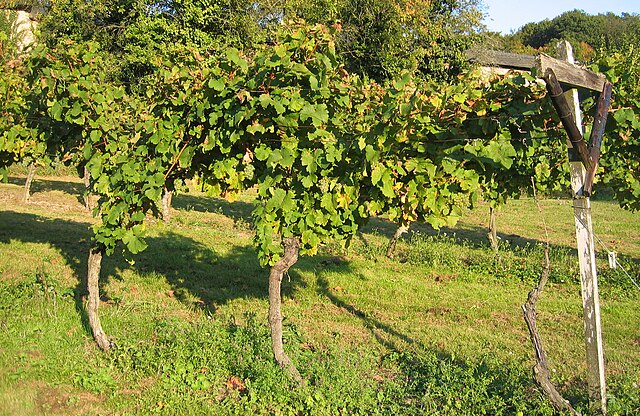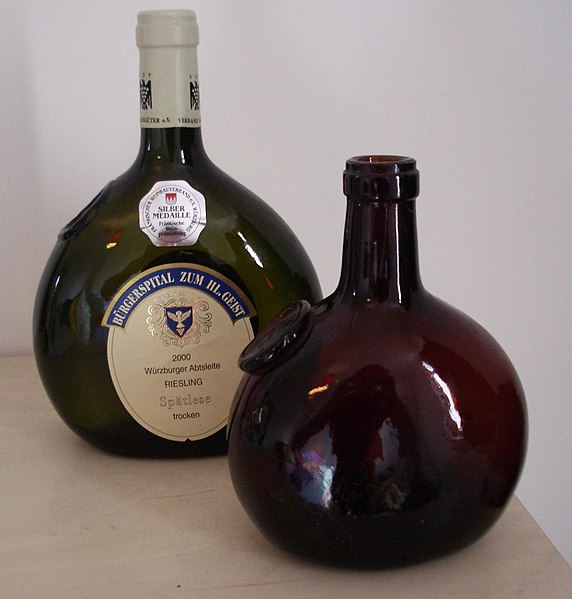German wine is primarily produced in the west of Germany, along the river Rhine and its tributaries, with the oldest plantations going back to the Roman era. Approximately 60 percent of German wine is produced in the state of Rhineland-Palatinate, where 6 of the 13 regions (Anbaugebiete) for quality wine are situated. Germany has about 103,000 hectares of vineyard, which is around one tenth of the vineyard surface in Spain, France or Italy. The total wine production is usually around 10 million hectoliters annually, corresponding to 1.3 billion bottles, which places Germany as the eighth-largest wine-producing country in the world. White wine accounts for almost two thirds of the total production.

Steep vineyards on Rüdesheimer Berg overlooking the river Rhine. These vineyards are located in the southwestern part of the region Rheingau at a bend in the river. These vineyards are planted with Riesling grapes, with some Spätburgunder (Pinot noir), and produce some of the finest wine in Germany.
Steep vineyards along the Moselle, close to the village Ürzig
Vine trellising according to the Pfälzer Kammertbau system traditional to the Palatinate, where it was widely used until the 18th century. In an all-wooden version (without the steel wires), this system is supposed to date back to Roman times.
German wine from Franken in the characteristic round bottles (Bocksbeutel)
White wine is a wine that is fermented without skin contact. The colour can be straw-yellow, yellow-green, or yellow-gold. It is produced by the alcoholic fermentation of the non-coloured pulp of grapes, which may have a skin of any colour. White wine has existed for at least 4,000 years.
Glasses of white wine
Torrontés wine tasting in Cafayate, Argentina
The Hittite King Warpalawa offering a bunch of grapes to the god Tarhunta. A bas-relief in rock at Ivriz in Turkey from the beginning of the 1st millennium BC.
White grapes in the late Middle Ages








